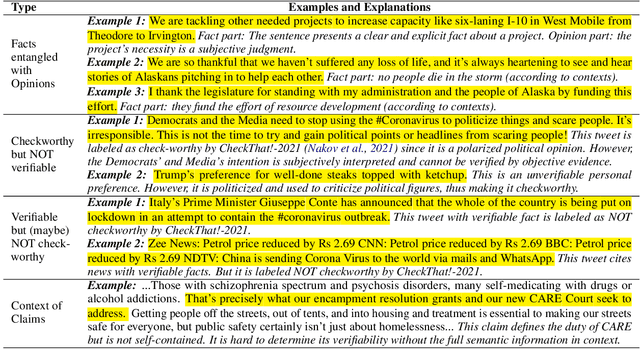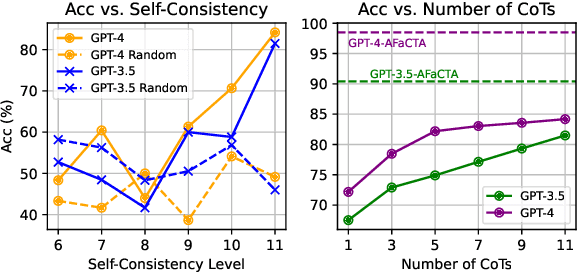Mrinmaya Sachan
Implicit Personalization in Language Models: A Systematic Study
May 23, 2024



Abstract:Implicit Personalization (IP) is a phenomenon of language models inferring a user's background from the implicit cues in the input prompts and tailoring the response based on this inference. While previous work has touched upon various instances of this problem, there lacks a unified framework to study this behavior. This work systematically studies IP through a rigorous mathematical formulation, a multi-perspective moral reasoning framework, and a set of case studies. Our theoretical foundation for IP relies on a structural causal model and introduces a novel method, indirect intervention, to estimate the causal effect of a mediator variable that cannot be directly intervened upon. Beyond the technical approach, we also introduce a set of moral reasoning principles based on three schools of moral philosophy to study when IP may or may not be ethically appropriate. Equipped with both mathematical and ethical insights, we present three diverse case studies illustrating the varied nature of the IP problem and offer recommendations for future research. Our code and data are at https://github.com/jiarui-liu/IP.
A Transformer with Stack Attention
May 07, 2024



Abstract:Natural languages are believed to be (mildly) context-sensitive. Despite underpinning remarkably capable large language models, transformers are unable to model many context-free language tasks. In an attempt to address this limitation in the modeling power of transformer-based language models, we propose augmenting them with a differentiable, stack-based attention mechanism. Our stack-based attention mechanism can be incorporated into any transformer-based language model and adds a level of interpretability to the model. We show that the addition of our stack-based attention mechanism enables the transformer to model some, but not all, deterministic context-free languages.
Cooperate or Collapse: Emergence of Sustainability Behaviors in a Society of LLM Agents
Apr 25, 2024



Abstract:In the rapidly evolving field of artificial intelligence, ensuring safe decision-making of Large Language Models (LLMs) is a significant challenge. This paper introduces Governance of the Commons Simulation (GovSim), a simulation platform designed to study strategic interactions and cooperative decision-making in LLMs. Through this simulation environment, we explore the dynamics of resource sharing among AI agents, highlighting the importance of ethical considerations, strategic planning, and negotiation skills. GovSim is versatile and supports any text-based agent, including LLMs agents. Using the Generative Agent framework, we create a standard agent that facilitates the integration of different LLMs. Our findings reveal that within GovSim, only two out of 15 tested LLMs managed to achieve a sustainable outcome, indicating a significant gap in the ability of models to manage shared resources. Furthermore, we find that by removing the ability of agents to communicate, they overuse the shared resource, highlighting the importance of communication for cooperation. Interestingly, most LLMs lack the ability to make universalized hypotheses, which highlights a significant weakness in their reasoning skills. We open source the full suite of our research results, including the simulation environment, agent prompts, and a comprehensive web interface.
On the Causal Nature of Sentiment Analysis
Apr 17, 2024



Abstract:Sentiment analysis (SA) aims to identify the sentiment expressed in a text, such as a product review. Given a review and the sentiment associated with it, this paper formulates SA as a combination of two tasks: (1) a causal discovery task that distinguishes whether a review "primes" the sentiment (Causal Hypothesis C1), or the sentiment "primes" the review (Causal Hypothesis C2); and (2) the traditional prediction task to model the sentiment using the review as input. Using the peak-end rule in psychology, we classify a sample as C1 if its overall sentiment score approximates an average of all the sentence-level sentiments in the review, and C2 if the overall sentiment score approximates an average of the peak and end sentiments. For the prediction task, we use the discovered causal mechanisms behind the samples to improve the performance of LLMs by proposing causal prompts that give the models an inductive bias of the underlying causal graph, leading to substantial improvements by up to 32.13 F1 points on zero-shot five-class SA. Our code is at https://github.com/cogito233/causal-sa
Book2Dial: Generating Teacher-Student Interactions from Textbooks for Cost-Effective Development of Educational Chatbots
Mar 05, 2024



Abstract:Educational chatbots are a promising tool for assisting student learning. However, the development of effective chatbots in education has been challenging, as high-quality data is seldom available in this domain. In this paper, we propose a framework for generating synthetic teacher-student interactions grounded in a set of textbooks. Our approaches capture one aspect of learning interactions where curious students with partial knowledge interactively ask a teacher questions about the material in the textbook. We highlight various quality criteria that such dialogues should fulfill and compare several approaches relying on either prompting or fine-tuning large language models. We use synthetic dialogues to train educational chatbots and show benefits of further fine-tuning in different educational domains. However, human evaluation shows that our best data synthesis method still suffers from hallucinations and tends to reiterate information from previous conversations. Our findings offer insights for future efforts in synthesizing conversational data that strikes a balance between size and quality. We will open-source our data and code.
Scaling the Authoring of AutoTutors with Large Language Models
Feb 27, 2024



Abstract:Large Language Models (LLMs) have found several use cases in education, ranging from automatic question generation to essay evaluation. In this paper, we explore the potential of using Large Language Models (LLMs) to author Intelligent Tutoring Systems. A common pitfall of LLMs is their straying from desired pedagogical strategies such as leaking the answer to the student, and in general, providing no guarantees. We posit that while LLMs with certain guardrails can take the place of subject experts, the overall pedagogical design still needs to be handcrafted for the best learning results. Based on this principle, we create a sample end-to-end tutoring system named MWPTutor, which uses LLMs to fill in the state space of a pre-defined finite state transducer. This approach retains the structure and the pedagogy of traditional tutoring systems that has been developed over the years by learning scientists but brings in additional flexibility of LLM-based approaches. Through a human evaluation study on two datasets based on math word problems, we show that our hybrid approach achieves a better overall tutoring score than an instructed, but otherwise free-form, GPT-4. MWPTutor is completely modular and opens up the scope for the community to improve its performance by improving individual modules or using different teaching strategies that it can follow
Calibrating Large Language Models with Sample Consistency
Feb 21, 2024Abstract:Accurately gauging the confidence level of Large Language Models' (LLMs) predictions is pivotal for their reliable application. However, LLMs are often uncalibrated inherently and elude conventional calibration techniques due to their proprietary nature and massive scale. In this work, we explore the potential of deriving confidence from the distribution of multiple randomly sampled model generations, via three measures of consistency. We perform an extensive evaluation across various open and closed-source models on nine reasoning datasets. Results show that consistency-based calibration methods outperform existing post-hoc approaches. Meanwhile, we find that factors such as intermediate explanations, model scaling, and larger sample sizes enhance calibration, while instruction-tuning makes calibration more difficult. Moreover, confidence scores obtained from consistency have the potential to enhance model performance. Finally, we offer practical guidance on choosing suitable consistency metrics for calibration, tailored to the characteristics of various LMs.
Competition of Mechanisms: Tracing How Language Models Handle Facts and Counterfactuals
Feb 18, 2024



Abstract:Interpretability research aims to bridge the gap between the empirical success and our scientific understanding of the inner workings of large language models (LLMs). However, most existing research in this area focused on analyzing a single mechanism, such as how models copy or recall factual knowledge. In this work, we propose the formulation of competition of mechanisms, which instead of individual mechanisms focuses on the interplay of multiple mechanisms, and traces how one of them becomes dominant in the final prediction. We uncover how and where the competition of mechanisms happens within LLMs using two interpretability methods, logit inspection and attention modification. Our findings show traces of the mechanisms and their competition across various model components, and reveal attention positions that effectively control the strength of certain mechanisms. Our code and data are at https://github.com/francescortu/Competition_of_Mechanisms.
AFaCTA: Assisting the Annotation of Factual Claim Detection with Reliable LLM Annotators
Feb 16, 2024



Abstract:With the rise of generative AI, automated fact-checking methods to combat misinformation are becoming more and more important. However, factual claim detection, the first step in a fact-checking pipeline, suffers from two key issues that limit its scalability and generalizability: (1) inconsistency in definitions of the task and what a claim is, and (2) the high cost of manual annotation. To address (1), we review the definitions in related work and propose a unifying definition of factual claims that focuses on verifiability. To address (2), we introduce AFaCTA (Automatic Factual Claim deTection Annotator), a novel framework that assists in the annotation of factual claims with the help of large language models (LLMs). AFaCTA calibrates its annotation confidence with consistency along three predefined reasoning paths. Extensive evaluation and experiments in the domain of political speech reveal that AFaCTA can efficiently assist experts in annotating factual claims and training high-quality classifiers, and can work with or without expert supervision. Our analyses also result in PoliClaim, a comprehensive claim detection dataset spanning diverse political topics.
Do Language Models Exhibit the Same Cognitive Biases in Problem Solving as Human Learners?
Jan 31, 2024Abstract:There is increasing interest in employing large language models (LLMs) as cognitive models. For such purposes, it is central to understand which cognitive properties are well-modeled by LLMs, and which are not. In this work, we study the biases of LLMs in relation to those known in children when solving arithmetic word problems. Surveying the learning science literature, we posit that the problem-solving process can be split into three distinct steps: text comprehension, solution planning and solution execution. We construct tests for each one in order to understand which parts of this process can be faithfully modeled by current state-of-the-art LLMs. We generate a novel set of word problems for each of these tests, using a neuro-symbolic method that enables fine-grained control over the problem features. We find evidence that LLMs, with and without instruction-tuning, exhibit human-like biases in both the text-comprehension and the solution-planning steps of the solving process, but not during the final step which relies on the problem's arithmetic expressions (solution execution).
 Add to Chrome
Add to Chrome Add to Firefox
Add to Firefox Add to Edge
Add to Edge